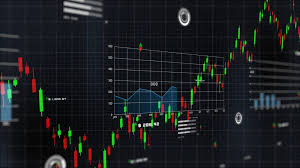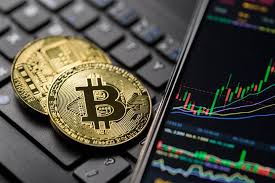
Mastering Your Investments: The Ultimate Trading Simulator Crypto
As the world of finance continues to shift towards digital currencies and technologies, the importance of being well-versed in cryptocurrency trading cannot be understated. This is where a Trading Simulator Crypto https://www.del.gr/component/k2/item/10-vestibulum-ante-ipsum-primis-in-faucibus/10-vestibulum-ante-ipsum-primis-in-faucibus?start=1550 comes into play. A trading simulator is an invaluable tool for both novice and experienced traders looking to hone their skills without risking real capital. In this comprehensive guide, we will delve into what trading simulators are, how they function, their benefits, and some best practices for making the most of your simulator experience.
What is a Trading Simulator?
At its core, a trading simulator is a platform that replicates the conditions of real-world trading environments. It allows users to test strategies, analyze price movements, and execute trades using virtual currency instead of real money. These simulators use real-time or historical data to emulate the dynamics of cryptocurrency markets so that users can experience trading in a safe and risk-free environment.
Why Use a Trading Simulator?
The benefits of utilizing a trading simulator are numerous. Here are some key reasons traders choose to practice on these platforms:
- Risk-Free Learning: Since you are trading with virtual currency, there’s no risk of losing real money. This allows you to make mistakes and learn from them without financial consequences.
- Strategy Testing: With the ability to experiment with different strategies, traders can identify what works best for them. This helps in building confidence and refining trading techniques.
- Market Understanding: Simulators help users become familiar with how different cryptocurrencies behave under various market conditions. This understanding is crucial for making informed decisions when trading live.
- Emotional Control: One of the biggest challenges traders face is emotional decision-making. By practicing in a simulator, traders learn to manage their emotions better in high-pressure trading situations.
How Does a Trading Simulator Work?
Most trading simulators provide a user interface that closely resembles that of a real trading platform. After signing up, users are typically given a virtual account loaded with fictitious funds. They can then:
- Select cryptocurrencies to trade.
- Analyze charts and market trends using technical analysis tools.
- Make buy and sell orders based on their analyses.
- Monitor their portfolio’s performance over time.
Many simulators also include valuable educational resources, such as tutorials, webinars, and market analysis reports, to help traders improve their knowledge and skills.

Choosing the Right Trading Simulator
When selecting a trading simulator, there are several features and factors to consider:
- Realism: The simulator should closely mimic real market conditions, including pricing, order execution, and trading volumes.
- User-Friendly Interface: The platform should be easy to navigate, allowing users to quickly access tools and resources.
- Variety of Assets: A good simulator will offer a wide range of cryptocurrencies and trading pairs to practice with.
- Educational Resources: Look for simulations that provide access to learning materials to deepen your understanding of trading.
- Community Support: Platforms with active forums or social features can provide additional insights and tips from other traders.
Best Practices for Using a Trading Simulator
While trading simulators are excellent tools, maximizing their effectiveness requires a strategic approach:
- Treat It Like Real Trading: Commit to your simulator practice as if you were trading with real money. This includes setting trading goals and maintaining discipline.
- Analyze Your Performance: Regularly review your trades to identify patterns, mistakes, and areas for improvement.
- Implement a Trading Plan: Develop a well-defined trading strategy covering risk management, entry and exit points, and profit goals.
- Stay Updated: Keep abreast of market news and trends that could affect cryptocurrency prices to simulate real-world conditions.
- Participate in Challenges: Some platforms offer trading contests or challenges that can motivate you to improve your skills and push your limits.
Transitioning to Live Trading
Once you feel confident in your skills thanks to a trading simulator, the next step is to transition to live trading. Here are some tips to help you make that transition smoothly:
- Start Small: Begin with a small amount of capital that you can afford to lose. This will help minimize stress and give you a better chance to adapt.
- Use What You’ve Learned: Apply the strategies and techniques you practiced in the simulator to real trades. Stick to your trading plan.
- Keep Emotions in Check: Remember that trading with real money can induce emotions that weren’t present while using the simulator. Stay disciplined and focused.
- Be Prepared for Losses: Understand that losses are part of trading. Have a plan for how to handle losses and avoid making impulsive decisions.
Conclusion
A Trading Simulator Crypto offers incredible potential for those looking to venture into cryptocurrency trading. Whether you are a beginner aiming to learn the ropes or an experienced trader wanting to refine your strategies, simulators provide a safe and invaluable environment to practice. By choosing the right simulator, adhering to best practices, and transitioning gradually to live trading, you can enhance your skills and boost your chances of success in the dynamic world of cryptocurrency.



